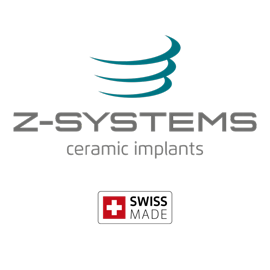As a dentist, oral surgeon, or periodontist, you know that dental implants are not a brand-new concept. While the physical and chemical structures of the human teeth remain unchanged, the dental implant industry has surely seen enhancements in the past few years. Do you know, the dental implant industry is all set of hit $4.4 billion by 2020 [1]? In this post, we’ll talk about the changing science of implant dentistry and how it is paving the way for increased revenue for dentists, oral surgeons, and orthodontists. Keep reading to know more.
Improved Implant Materials and Growth Factors for Better Clinical Outcomes
Not all dental implants are crafted equally, and the materials and processes used to create implants are more scrutinized than ever before. Due to an increased concern about placing anything synthetic in the mouth, more and more patients want to know everything about the dental implants. While Titanium has been an ideal choice for dental implant patients over the past few years, the properties of zirconia material make it ideal for use in dental implants.
The shift from Titanium implants to Zirconia dental implants
Conscious patients always visit a dental clinic with a popular question in mind, “Are ceramic implants or Zirconia implants safer alternatives to Titanium implants?” Well, it’s time we answer the popular question.
Ceramic implants or Zirconia implants are generally marketed as non-metal implants [2]. The presence of Zirconia gives the dental implants a white color which resembles the natural color of our teeth. On the other hand, Titanium implants are grey-colored. The natural white color of Zirconia implants make them popular among patients. Apart from this reason, there are several other reasons why Zirconia dental implants are preferred by patients over Titanium dental implants. These include:
- Zirconia implants are metal-free and do not damage the soft tissues in the mouth or gums.
- Zirconia is biocompatible and integrates perfectly with the bone structure, jawline, and gums.
- Most of the Zirconia implants are single piece structures which makes it easy to place them at any angle.
- As already mentioned above, Zirconia implants are white in color and resemble the natural color of the teeth. Hence, they are more aesthetically appealing.
- Zirconia implants are available as single piece implants, and do not have any joints. Therefore, they are less prone to bacterial growth or plaque assembly.
- Zirconia implants are resistant to corrosion and do not conduct electricity or heat.
- People using Zirconia implants rarely experience allergies or sensitivity.
Use of biological growth factors (PRF) to increase the stability of implants and accelerate osteointegration
In the past few eras, various biomaterials have been used in implant dentistry to speed up wound healing and fill osseous faults. Some of the biomaterials used in the past were dried bone graft, tricalcium phosphate, hydroxyapatite, etc.
Currently, Platelet Rich Fibrin (PRF) is being used to stimulate patient’s cells toward regeneration to accelerate recovery after insertion of a dental implant and tackle surgical issues encountered during dental implant procedures such as improper bone grafting. PRF is derived from the blood and is basically a concentration of growth factors [3] that promote the healing of wounds to repair damaged oral and dental tissues.
Application of PRF in the dental implant industry
- Bone augmentation during dental surgery
- Sinus lift
- Correction of an intra-bony defect in periodontics
- Guided bone regeneration
- Treatment of periapical lesions and gingival recession
The use of PRF in implant dentistry has shown promising results in the past few years [4].
The future of the dental implant industry
Looking at the pace at which the dental implant industry is expanding, the next 10-15 years in implant dentistry look to be exciting and very profitable. Moreover, the use of PRF has shown immense benefits in different aspects of implant dentistry. If better solutions can aid better results in lesser time, dentists and patients both benefit. Patients benefit from a less painful and costly procedure, while dentists benefit improved patient turnover and growing business revenue. Whether it’s the Zirconia implant or PRF, the dental implant industry is working to help dentists, oral surgeons, and periodontists create long-term, aesthetic results for their patients and offer more treatment options than ever before.
References and citations
- Dentistry Today, ‘Dental Implant Market to Top $4.4 Billion by 2020,’ July 2016, http://www.dentistrytoday.com/news/industrynews/item/1078-dental-implant-market-to-top-4-4-billion-by-2020
- Journal of International Society of Preventive and Community Dentistry, ‘Zirconia in dental implantology: A review,’ June 2015, https://www.ncbi.nlm.nih.gov/pmc/articles/PMC4515795/
- International Journal of Implant Dentistry, ‘Evaluation of Effectiveness of Concentrated Growth Factor on Osseointegration,’ December 2017, https://www.ncbi.nlm.nih.gov/pmc/articles/PMC5336440/
- National Journal of Medical and Dental Research, ‘Platelet Rich Fibrin and Its Application in Dentistry – A Review Article,’ June 2014, https://www.researchgate.net/publication/267392184_Platelet_Rich_Fibrin_and_its_Applications_in_Dentistry-A_Review_Article



